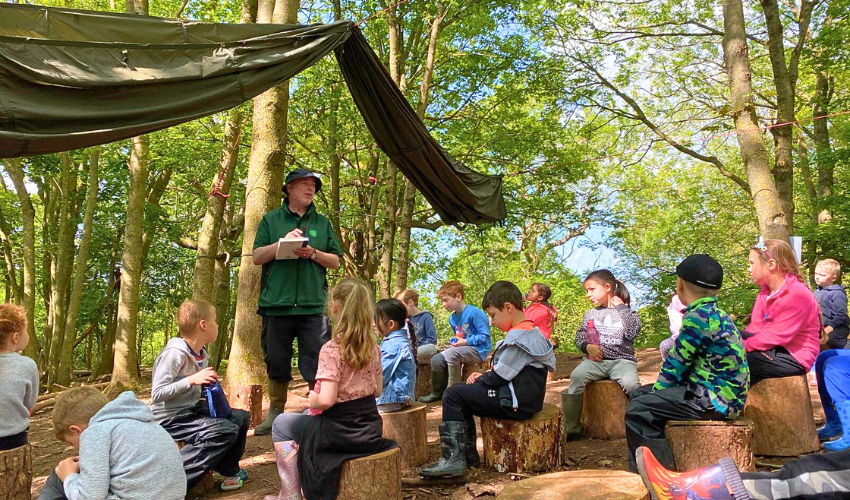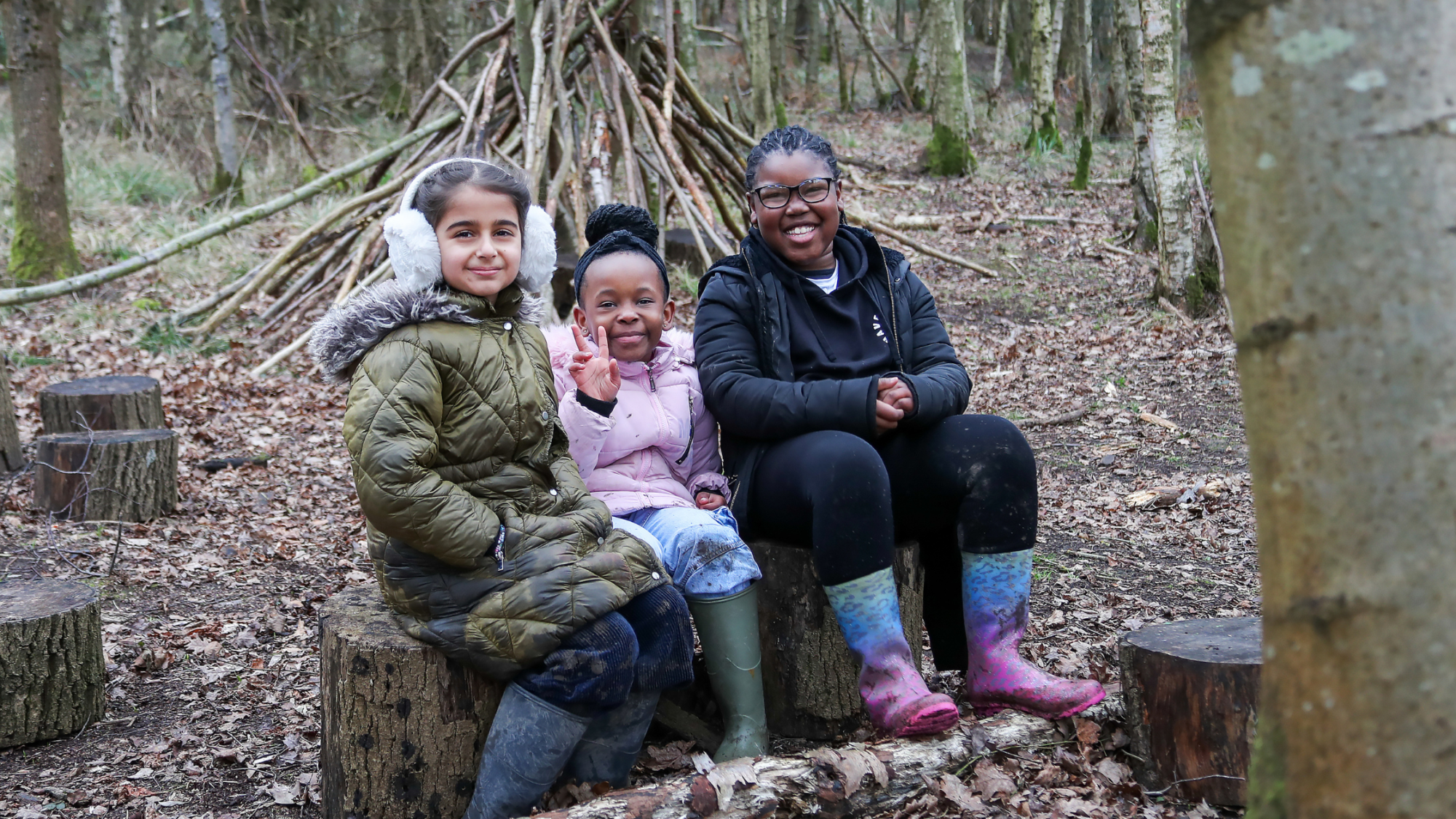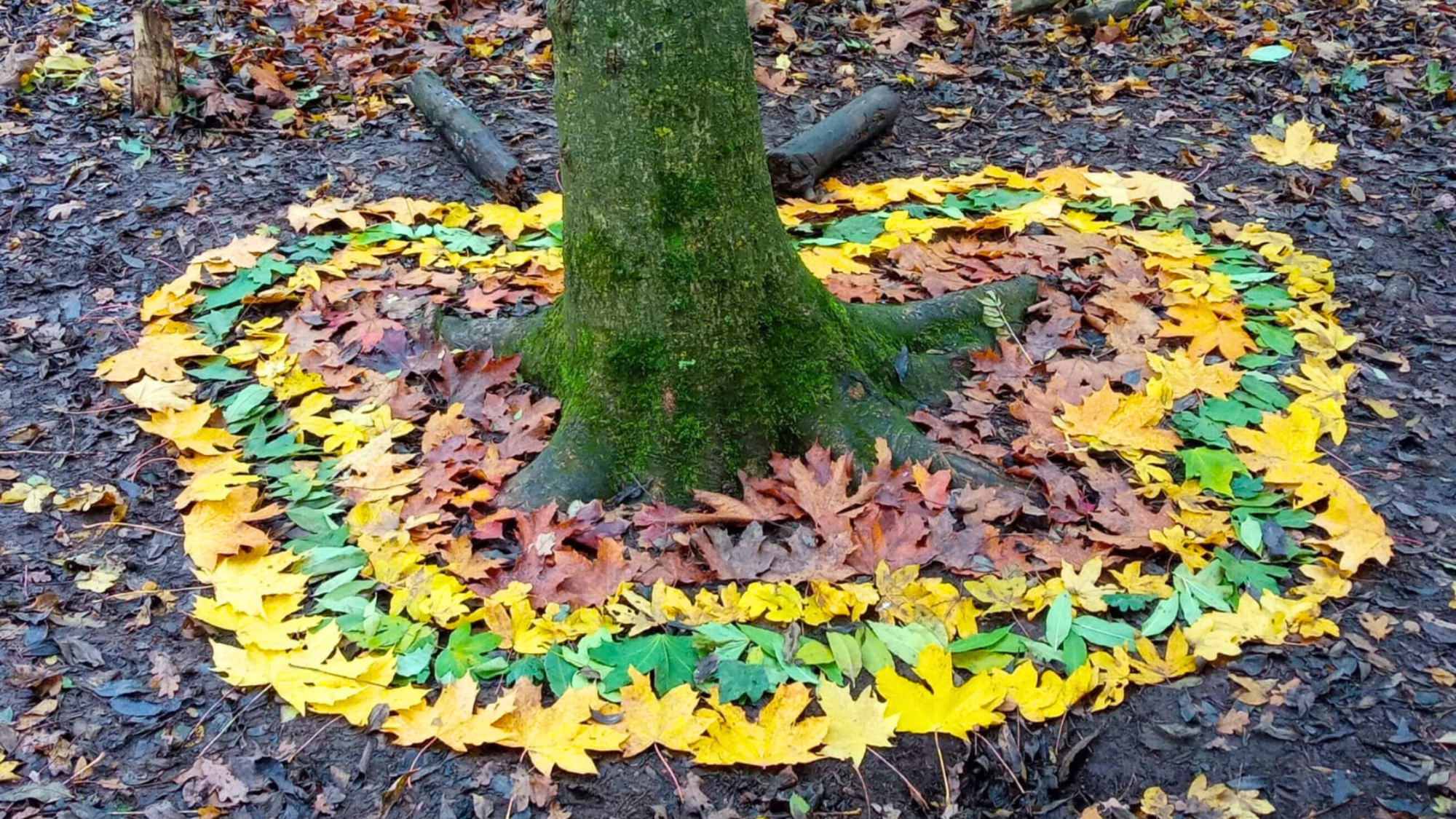
Back to school: Bringing learning to life
Education outside the classroom provides a new dynamic for teachers and students that can have a powerful effect on engagement in learning, wellbeing and connection to nature. Instead of offering ‘forest school’, our education team approaches outdoor learning by using a continuous and progressive model for curriculum learning whereby young people come to the Forest several times in a year to maximise the impact of learning in the outdoors.
This research-based programme allows children the opportunity to not only engage in their learning in new exciting ways, but also to connect and build a long-standing relationship with nature.
Bespoke learning
We work in consultation with our partner schools to decide what will be delivered in each session, often focussing on school priorities. Our approach is school led, and we teach subjects from across the curriculum, including Maths, English, Science, Geography, History and Art.
There are many advantages to continuous learning and the way our education team teaches. The Forest is a wonderful resource in which we can offer alternative surroundings that can help overcome barriers that some children experience in school.
-
We can be noisy! No ceilings and other classes nearby
-
We can be messy!
-
We can be free in learning - understanding and focussing on the process and not final product
-
We work together - learning collaborative skills that reinforce teamwork
-
We can be mindful - respecting and appreciating nature, learning to look after this wonderful resource.

The Forest obviously provides a spectacular backdrop for any art session, with nature as the artist’s muse. However, in planning any session, we consider how we can best deliver National Curriculum objectives through utilising the Forest to achieve them, whilst also ensuring that we foster a connection to nature that is so important for us and the planet as a whole.
Our outdoor learning teacher Phil shines a light on two of his favourite lessons to explore with students in the Forest.
History
Taking students back in time to explore Vikings is very exciting and we can get incredibly imaginative. We can answer questions such as do they know how big a Viking long boat was? What do we have a lot of in the Forest? A lot of sticks and wood!

By creating a building project in the lesson, we can encompass national curriculum objectives whilst learning with social, and practical skills. At the beginning of the lesson, students elected a master builder who is given a metre long stick with a ribbon tied around it. All the other students have a job to do, stick collecting, placing or passing. Interwoven into this lesson we also covered collaborative language stems – including how to talk to each other to get the best out of their peers.
Then before our eyes they began to build a long boat! The finished boat was around 30 metres long. It was joyous to see all the children sat in their boat at the end of the session.
This ‘big build idea’ is incorporated into other history lessons, including covering ancient Greeks. The children really love this, and it is successful in achieving positive learning.
“The connections that your team make to our values and curriculum have been honestly amazing.” - Sarah Allen, Principal Arrow Valley First School.

Maths
Mapplebrough Green Primary, one of our partner schools, approached us with a particular ask: can we provide practical maths skills for year 3 and 4 students?
The Forest opened some opportunities for creative thinking. I asked the children to explore Wild Wood to find a stick that they thought was a metre long. Eventually as a group we refined it until all pupils in the class had sticks that were a metre long. We then placed masking tape on the ends, at 0cm and 100cm, and asked the children to estimate half the stick and tape that too. Together we then divided the sticks into tenths.
We then took the maths group, measuring sticks in hand, for a walk, estimating lengths, measuring, and recording as we went. The walk is a short distance to the ‘Fat Oak’ in Middle Spernal, this tree is much older than the others, so it is a marvel for the children to see. We used string to wrap around the tree, that is then measured using their sticks and findings recorded, using their understanding of meters, halves and 10ths.
Seeing children who usually recoil at the idea of maths thrive in a new environment is truly spectacular. Hearing feedback from schools, sometimes a few weeks later, about how the students still remember and refer to the lesson in the Forest is great for the team, knowing our work really does have a positive impact on these young children's education.
Art
My colleague Helena Cashmore is very passionate about art in the Forest, and with nature connectedness being a particular interest of hers she really captivates the children. For me, I have absolute adoration when I bring my next class into the Forest and see wonderful art works that remain from her lessons and my class are in absolute awe! One day I remember from last autumn was phenomenal, seeing Wild Wood decorated with landart was breath taking. It was one of the greatest feelings seeing and hearing children become excited and inquisitive.
When planning her art lessons, Helena, (as we all do) will look at the National Curriculum objectives. A particular example I am thinking of is when year six came to visit.
The National Curriculum objectives for this year group are to be aware of different kinds of art and to know about great artists.
Helena chose impressionist art as a starter for that form is done ‘en plein air’, which they were! Throughout the day the weather conditions changed enabling her class to consider how the mood might change with the light. The class looked at the various techniques like tache, as well as artists like Monet and Van Gogh. As it was autumn, She then focused on landart, analysing the work of Andy Goldsworthy, Richard Shilling and James Brunt before foraging our own materials to create a piece. Lastly, we looked at Ellsworth Kelly’s blind contour leaf drawing (you cannot look at the paper, only the subject as you sketch) and had a go ourselves.
Another National Curriculum objective is to to improve mastery of paint techniques.
The year six children made their own natural paints for the session, some foraged and some bought, mixing things like clay, leaves, blackberries, charcoal, coffee, mustard and other berries.
These activities then tap into the ‘Pathways to Nature Connectedness’ devised by Derby University. In using nature to create art, the children are experiencing the beauty pathway, learning to appreciate that all within nature has its own beauty. You can find out more about nature connectedness in an article from Helena here.
Below is a snap shot of the land art produced; I’m sure you’ll agree that the results are fantastic!

Come and see for yourself!
If you are an educator, a supporter in a school, a parent, a parent councillor or in any way associated with enhancing learning in young people in a school or college we really ask you to consider spreading the word about our Forest Discovery Days as well as opportunities to become a regular partner school.
Forest Discovery Days are learning outside the classroom opportunities for schools to enhance their curriculum and experience all the benefits that a partnership with the Heart of England Forest can offer to their pupils. You can find out more here.



